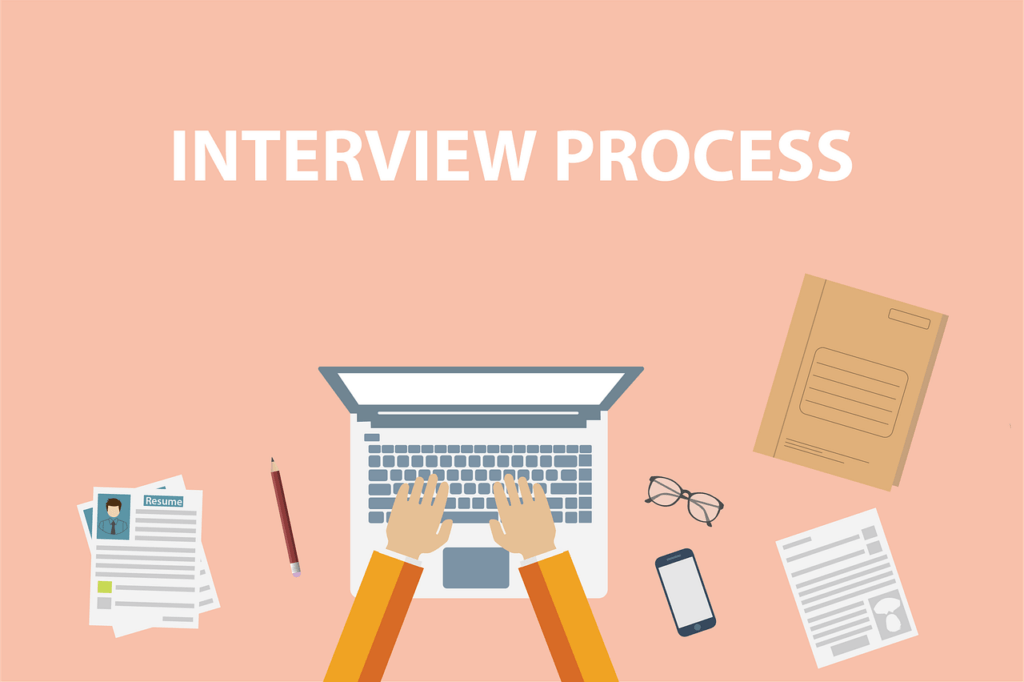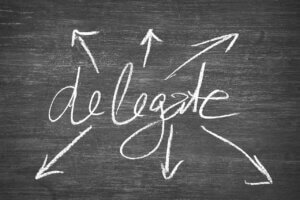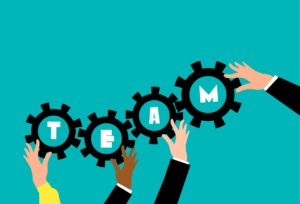Introduction
In the competitive landscape of hiring, conducting a great interview is crucial for identifying the best candidates who can contribute to your organisation’s success.
Imagine you’re in the middle of an interview, and the candidate sitting across from you is perfect on paper but seems nervous and guarded.
How do you break through the surface to discover their true potential?
The answer lies in mastering the art of conducting a great interview.
In this blog, we’ll unlock the secrets to creating a compelling interview experience that not only puts candidates at ease but also uncovers the insights you need to make the best hiring decisions.
Ready to transform your interview process and find the perfect fit for your team? Let’s dive in.
What is a Great Interview
The interview process is not just a formal requirement but a pivotal step in making informed hiring decisions.
A well-conducted interview can reveal a candidate’s true potential, cultural fit, and the unique skills they bring to the table, while a poorly managed one can result in missed opportunities and costly hiring mistakes.
This blog aims to equip you with the knowledge and techniques needed to conduct effective and insightful interviews.
Whether you are a seasoned HR professional or a hiring manager stepping into the interviewing role for the first time, our comprehensive guide will help you refine your approach.
From preparing the right questions to creating a comfortable interview environment and assessing candidates accurately, we will cover all the essential aspects to ensure you make the best hiring decisions.
Join us as we explore the art and science of conducting great interviews, paving the way for successful talent acquisition and organisational growth.
Prepare for the Interview
The Importance of Conducting Effective Interviews
Effective interviews are the cornerstone of successful hiring. They provide a structured platform to evaluate a candidate’s skills, experience, and cultural fit within the organisation.
A well-conducted interview not only helps in identifying the right talent but also enhances the candidate’s perception of the company, reflecting a professional and organised image.
Conversely, ineffective interviews can lead to poor hiring decisions, resulting in high turnover rates, increased training costs, and a negative impact on team morale.
Key Elements of a Successful Interview
A successful interview is built on several critical elements:
- Preparation: Thorough preparation sets the stage for a smooth and productive interview.
- Structured Format: A clear structure helps in maintaining focus and consistency across interviews.
- Relevant Questions: Asking the right questions reveals a candidate’s true abilities and fit.
- Active Listening: Attentively listening to responses ensures a deeper understanding of the candidate.
- Engaging Environment: Creating a comfortable atmosphere encourages candidates to be open and honest.
Research the Candidate and Their Background
Before the interview, invest time in researching the candidate.
Review their resume, LinkedIn profile, and any other available professional information.
Understanding their career history, achievements, and interests allows you to tailor your questions and engage in meaningful conversations.
This research helps in identifying areas for deeper exploration during the interview and shows the candidate that you value their time and effort.
Review the Job Description and Identify Key Competencies and Qualifications
A comprehensive review of the job description is essential to identify the key competencies and qualifications required for the role. Consider the following steps:
- Highlight Core Responsibilities: Focus on the main duties and responsibilities of the position.
- Identify Must-Have Skills: Determine the essential skills and qualifications necessary for success in the role.
- Understand Desired Attributes: Look for attributes such as teamwork, problem-solving abilities, and cultural fit.
- Prepare Competency-Based Questions: Develop questions that assess whether the candidate possesses these critical skills and attributes.
By aligning your interview questions with the job description, you ensure that the interview process is targeted and relevant, allowing you to effectively evaluate each candidate’s suitability for the role.
Related Reading: An Insider View on the Power of Job Descriptions
Set the Stage
Create a Comfortable and Professional Environment for the Interview
The environment in which an interview takes place can significantly influence the candidate’s comfort level and, consequently, their performance. To create an optimal setting:
Choose a Quiet, Private Location: Ensure the interview room is free from distractions and interruptions. A quiet, private space allows both parties to focus and engage in a meaningful conversation.
Set Up the Room Appropriately: Arrange seating in a way that fosters open communication. A round table or comfortable chairs positioned at a slight angle can help reduce formality and promote a more relaxed atmosphere.
Pay Attention to Lighting and Temperature: Ensure the room is well-lit and at a comfortable temperature to create a welcoming environment.
Minimise Digital Distractions: Turn off notifications on phones and computers to show respect for the candidate’s time and to stay fully engaged in the interview.
Offer Refreshments: Providing water or coffee can be a small gesture that helps put the candidate at ease.
Introduce Yourself and Provide an Overview of the Interview Process
First impressions set the tone for the entire interview. Begin by introducing yourself and your role within the organisation.
A brief personal introduction helps establish a connection and makes the candidate feel more comfortable.
Introduce Yourself
Share your name, title, and a brief background about your role in the company. This transparency helps build rapport and sets a professional tone.
Example: “Hello, I’m [Your Name], the Hiring Manager for [Department/Team]. I’ve been with [Company] for [number of years], and I’m excited to learn more about your background and experience today.”
Outline the Interview Process
Provide a clear overview of what the candidate can expect during the interview.
This includes the structure, the types of questions you will ask, and any additional steps, such as assessments or follow-up interviews.
Example: “Today, we’ll start with some questions about your background and experience, then we’ll move on to discuss your skills and how they align with the role.
Finally, there will be an opportunity for you to ask any questions you have about the position or our company.”
Set the Duration
Inform the candidate about the expected length of the interview to help them manage their expectations and time.
Example: “The interview should take approximately [time duration], and we’ll ensure there’s plenty of time for you to ask questions at the end.”
Encourage a Two-Way Conversation
Emphasise that the interview is a dialogue, not just a one-sided interrogation. Encourage the candidate to ask questions and engage in discussion.
Example: “Please feel free to ask questions at any point during our conversation. We want this to be an interactive discussion where we both get to know each other better.”
By setting the stage effectively, you create a professional and welcoming environment that allows the candidate to feel comfortable and confident, ultimately leading to a more productive and insightful interview.
Build Rapport
Establish a Positive and Welcoming Atmosphere
Creating a positive and welcoming atmosphere is essential for putting the candidate at ease and fostering open communication.
When candidates feel comfortable, they are more likely to share genuine insights about their skills and experiences. Here are some strategies to establish a positive environment:
Warm Greeting
Start with a friendly greeting and a smile. A warm handshake (if appropriate) and maintaining eye contact can help set a positive tone.
Example: “Hi [Candidate’s Name], it’s great to meet you! Thank you for taking the time to come in today.”
Small Talk
Engage in light conversation to break the ice. Discussing neutral topics like the weather, their journey to the interview, or recent events can help relax the candidate.
Example: “How was your commute to our office? Did you find everything okay?”
Show Genuine Interest
Demonstrate that you are genuinely interested in the candidate as a person. Listen actively and respond thoughtfully to their initial comments.
Example: “I noticed on your resume that you recently completed a project on [topic]. I’d love to hear more about what sparked your interest in that area.”
Positive Body Language
Maintain open and welcoming body language. Nod occasionally to show understanding and agreement, and avoid crossing your arms or appearing distracted.
Reassure the Candidate
Let the candidate know that it’s normal to feel a bit nervous and that you are here to have a constructive conversation.
Example: “I know interviews can be a bit nerve-wracking, but this is just a conversation for us to get to know each other better.”
Ask Open-Ended Questions to Encourage Conversation and Engagement
Open-ended questions are a powerful tool for building rapport and encouraging candidates to share more about themselves.
These questions allow candidates to provide detailed responses, showcasing their experiences and thought processes. Here’s how to effectively use open-ended questions:
Start Broad
Begin with broad questions that invite the candidate to discuss their background and experiences.
Example: “Can you tell me a bit about your career journey and what led you to apply for this position?”
Encourage Storytelling
Ask questions that prompt candidates to share stories or examples from their past work.
Example: “Can you describe a challenging project you worked on and how you managed to overcome the obstacles?”
Explore Motivations and Goals
Understand the candidate’s motivations and future aspirations by asking about their goals and interests.
Example: “What attracted you to our company, and how do you see this role aligning with your career goals?”
Delve into Specific Experiences
Use open-ended questions to delve deeper into specific skills or experiences relevant to the role.
Example: “How have you approached leading a team in the past, and what strategies have you found most effective?”
Promote Reflection
Encourage candidates to reflect on their experiences and what they’ve learned.
Example: “Looking back on your career, what would you say has been your greatest learning experience, and why?”
By establishing a positive atmosphere and asking open-ended questions, you create a conversational flow that allows candidates to feel comfortable and engaged.
This approach not only builds rapport but also provides richer insights into the candidate’s qualifications and fit for the role.
Ask Effective Questions
Use a Mix of Behavioural, Situational, and Competency-Based Questions
A well-rounded interview includes a variety of question types that together provide a comprehensive understanding of the candidate.
By using a mix of behavioural, situational, and competency-based questions, you can assess different aspects of a candidate’s abilities and fit for the role.
Behavioural Questions
These questions explore how candidates have handled situations in the past, providing insight into their experience and behaviour patterns.
Example: “Can you describe a time when you had to manage a difficult team member? How did you handle it, and what was the outcome?”
Situational Questions
These hypothetical questions gauge how candidates might approach potential challenges or scenarios in the future.
Example: “If you were given a project with a tight deadline and limited resources, how would you prioritise tasks and ensure successful completion?”
Competency-Based Questions
These questions focus on specific skills and competencies required for the role, often asking candidates to demonstrate their abilities.
Example: “Can you provide an example of a time when you used your analytical skills to solve a complex problem?”
Using this blend of questions allows you to gather detailed information on the candidate’s past performance, predictive future behaviour, and specific competencies.
Tailor Questions to Assess the Candidate’s Skills, Experience, and Fit for the Role
Tailoring your questions to the specific requirements of the role ensures that you effectively assess whether the candidate possesses the necessary skills and experience.
This also helps in determining their potential fit within the company culture and team dynamics.
Align with Job Description
Review the job description to identify the key skills and qualifications required. Develop questions that directly relate to these aspects.
Example: If the role requires strong project management skills, you might ask: “Can you walk me through a project you managed from start to finish? What steps did you take to ensure its success?”
Focus on Relevant Experience
Ask questions that probe into the candidate’s relevant past experiences, ensuring they align with the role’s demands.
Example: For a sales position, you might ask: “What has been your most successful sales strategy in your previous roles, and how did it contribute to meeting your targets?”
Assess Cultural Fit
Evaluate how well the candidate’s values and working style align with the company culture.
Example: “How do you typically approach collaboration with team members? Can you give an example of a successful team project you were part of?”
Evaluate Problem-Solving Abilities
For roles requiring critical thinking and problem-solving, pose questions that require the candidate to demonstrate these skills.
Example: “Describe a situation where you had to think on your feet to resolve an unexpected issue. What steps did you take, and what was the result?”
Gauge Long-Term Potential
Understand the candidate’s career aspirations and how they see their growth within the company.
Example: “Where do you see yourself in five years, and how does this position fit into your career goals?”
By carefully crafting and tailoring your questions, you can gather comprehensive information on the candidate’s capabilities and determine their suitability for the role.
This thorough assessment helps ensure that you make well-informed hiring decisions that contribute to the long-term success of your organisation.
Active Listening
Pay Attention to the Candidate’s Responses and Body Language
Active listening is a critical skill in conducting effective interviews. It involves fully concentrating, understanding, responding, and remembering what the candidate is saying.
This not only helps in gaining deeper insights but also makes the candidate feel valued and heard. Here’s how to practice active listening:
Focus on the Candidate
Give the candidate your undivided attention. Avoid distractions such as checking your phone or looking at your watch.
Maintain eye contact to show that you are engaged and interested in their responses.
Observe Body Language
Pay attention to non-verbal cues such as gestures, facial expressions, and posture.
These can provide additional context to the candidate’s verbal responses. For example, a candidate who maintains eye contact and sits upright is likely feeling confident and engaged.
Acknowledge Responses
Use verbal and non-verbal signals to show that you are actively listening. Nodding, smiling
Provide Information
Offer Details About the Company, Team, and Role
Sharing comprehensive and accurate information about your organisation, the team, and the specific role is crucial in helping candidates understand what they are applying for and whether they see themselves thriving in that environment. Here are some key points to cover:
Company Overview
Begin with a brief history of the company, its mission, vision, and core values. Highlight any recent achievements, industry standing, and future goals.
Example: “Our company, [Company Name], has been a leader in the [industry] for over [number] years. Our mission is to [mission statement], and we pride ourselves on our values of [core values]. Recently, we achieved [notable achievement], and we’re excited about our plans for [future goal].”
Team Dynamics
Provide insights into the team structure, its culture, and how the team collaborates. Mention the size of the team, key projects they are working on, and the team’s contribution to the company’s success.
Example: “You’ll be joining a dynamic team of [number] professionals in the [department] who are currently working on innovative projects like [project examples]. Our team values collaboration, continuous learning, and innovation.”
Role Specifics
Clearly outline the responsibilities, expectations, and goals associated with the role. Highlight any opportunities for growth, key performance indicators, and how the role fits into the larger organisational framework.
Example: “The [Job Title] role involves [key responsibilities], and we are looking for someone with skills in [specific skills]. This position offers opportunities for growth in [areas of growth], and your success will be measured by [key performance indicators]. This role is pivotal to our [department’s/organisation’s] strategy.”
Answer Any Questions the Candidate May Have About the Position or Organisation
Encouraging candidates to ask questions provides them with clarity and demonstrates transparency and openness from your side. This helps in setting realistic expectations and building trust.
Invite Questions
Prompt the candidate to ask about any aspects of the role, team, or company that they are curious about.
Example: “I’ve shared a lot of information about our company and the role. Do you have any questions or need more details on anything we’ve discussed so far?”
Provide Honest and Clear Answers
Answer questions truthfully and clearly. If there is something you don’t know, be honest and offer to follow up with the information.
Example: “That’s a great question. We emphasise professional development and have several programs in place. For instance, we offer [specific training programs or growth opportunities].”
Address Concerns
If the candidate has concerns or reservations, address them openly. This is an opportunity to alleviate any doubts and provide a realistic view of what to expect.
Example: “I understand your concern about [specific concern]. We are aware of this and are actively working on [solution or mitigation]. Additionally, we offer [support or resources] to help our team members manage this aspect.”
Highlight Unique Aspects
Use this opportunity to showcase unique benefits, company culture, and perks that might make the organisation particularly attractive.
Example: “In addition to our collaborative culture, we offer [unique benefits or perks], such as flexible working hours, wellness programs, and opportunities for international projects.”
By offering detailed information and addressing candidates’ questions comprehensively, you help them make an informed decision about their fit for the role and the organisation.
This transparency not only aids in attracting top talent but also sets a foundation for a trusting employer-employee relationship.
Evaluate Responses
Assess the Candidate’s Qualifications, Experience, and Alignment with the Job Requirements
Evaluating a candidate’s responses is essential for determining their suitability for the role. This involves a careful assessment of their qualifications, experience, and how well they align with the job requirements.
Qualifications
Review how the candidate’s educational background and professional certifications align with the job requirements.
Assess whether their qualifications meet, exceed, or fall short of what is needed for the role.
Example: “Does the candidate have the necessary degrees or certifications required for this position? How do their qualifications compare to the requirements listed in the job description?”
Experience
Evaluate the relevance and depth of the candidate’s past work experience. Consider how their previous roles and responsibilities prepare them for the challenges of the new role.
Example: “Has the candidate demonstrated experience in similar roles or industries? How do their past responsibilities align with the key duties of this position?”
Skill Alignment
Assess whether the candidate possesses the specific skills and competencies required for the role.
Look for evidence of their proficiency in critical areas, such as technical skills, problem-solving abilities, and leadership qualities.
Example: “Did the candidate provide examples that show they have the necessary technical skills and problem-solving abilities?
How well do their skills match the requirements outlined in the job description?”
Cultural Fit
Consider how well the candidate’s values, work style, and personality align with the company culture.
Evaluate their potential to integrate into the existing team and contribute positively to the organisational environment.
Example: “Does the candidate’s approach to teamwork and communication align with our company’s values and culture? How likely are they to adapt to and thrive in our work environment?”
Take Notes and Compare Responses Against Predetermined Criteria
Accurate note-taking and comparison against predetermined criteria are critical for making objective and informed hiring decisions.
Take Detailed Notes
Throughout the interview, make detailed notes on the candidate’s responses, including examples, strengths, and areas of concern.
This documentation will be crucial for reviewing and comparing candidates later.
Example: “Note specific examples provided by the candidate that demonstrate their expertise and achievements. Record any concerns or gaps that were mentioned during the interview.”
Develop a Scoring System
Use a scoring system or evaluation rubric based on the job description and key criteria.
This system can include categories such as qualifications, experience, skills, and cultural fit, allowing for a structured assessment of each candidate.
Example: “Assign scores or ratings for each criterion, such as technical skills, problem-solving abilities, and alignment with company values. This helps in comparing candidates objectively.”
Compare Against Criteria
After the interview, compare the candidate’s responses and qualifications against the predetermined criteria.
Evaluate how well they meet the essential requirements and how they perform relative to other candidates.
Example: “Review the candidate’s scores for each criterion and compare them with other candidates. Assess their overall fit for the role based on the aggregated evaluation.”
Discuss and Synthesise
If interviewing as a team, discuss your notes and evaluations with other interviewers. Synthesise feedback to form a comprehensive view of the candidate’s suitability.
Example: “Collaborate with other interviewers to consolidate notes and evaluations. Discuss each candidate’s strengths and weaknesses in relation to the job requirements and team fit.”
By methodically evaluating responses and comparing them against predetermined criteria, you ensure a fair and thorough assessment of each candidate.
This approach helps in making well-informed hiring decisions and selecting the candidate who best meets the needs of the role and the organisation.
Close the Interview
Summarise Key Points Discussed During the Interview
Closing the interview effectively involves summarising the main points covered to reinforce the candidate’s understanding and ensure clarity.
This step helps to recap the conversation and provide both you and the candidate with a clear view of what has been discussed.
Recap Major Topics
Briefly revisit the key areas covered during the interview, including the candidate’s qualifications, experiences, and how they align with the role.
Highlight any significant strengths or concerns that were mentioned.
Example: “To summarise, we discussed your experience with project management and your approach to handling team challenges.
You mentioned your successful project on [specific project], which aligns well with the responsibilities of this role.”
Reiterate Role and Expectations
Reaffirm the main aspects of the job role and expectations to ensure the candidate has a clear understanding of what the position entails.
Example: “As a reminder, the role involves managing key projects, leading a team, and collaborating with various departments.
We’re looking for someone with strong leadership skills and the ability to handle tight deadlines.”
Outline Next Steps
Provide an overview of the next steps in the hiring process. This includes any further interviews, assessments, or timelines for making a decision.
Example: “Our next step is to review all candidates and make a decision within the next two weeks. We’ll reach out to you by [specific date] to inform you of the outcome or to schedule a follow-up interview if necessary.”
Invite the Candidate to Ask Any Final Questions
Encourage the candidate to ask any final questions helps clarify any uncertainties they might have and demonstrates that you value their engagement in the process.
Open the Floor for Questions
Invite the candidate to ask any additional questions they may have about the role, the team, or the organisation.
Example: “Before we finish, do you have any final questions or concerns about the position, the team, or our company that we haven’t covered yet?”
Provide Detailed Answers
Respond to any questions with clear and comprehensive answers. This helps in building transparency and can address any lingering concerns the candidate might have.
Example: “You asked about our approach to professional development. We offer various training programs and mentorship opportunities to help employees grow and advance in their careers.”
Reaffirm Your Availability
Let the candidate know that they can reach out if they think of any additional questions after the interview.
Example: “If you have any other questions after today, feel free to email me at [your email address]. I’m happy to provide any additional information you may need.”
Thank the Candidate
Express your appreciation for the candidate’s time and interest in the position. A positive closing statement helps leave a good impression.
Example: “Thank you for coming in today and for your interest in the [Job Title] role. It was a pleasure speaking with you, and we appreciate the insights you’ve shared.”
By summarising key points and inviting final questions, you effectively close the interview on a positive note, ensuring that both you and the candidate have a clear understanding of the discussion and next steps.
This approach not only enhances the candidate’s experience but also reinforces your professionalism and transparency throughout the hiring process.
Post-Interview Follow-Up
Thank the Candidate for Their Time and Interest in the Position
After an interview, it is essential to express gratitude to the candidate for their time and interest in the position.
This not only demonstrates professionalism but also leaves a positive impression of the company, regardless of the interview outcome. A well-crafted thank you note should include:
Acknowledgement of Time and Effort
Recognise the effort the candidate put into preparing for and attending the interview.
Mention specific details about the interview to make the note personal and genuine.
Appreciation of Interest
Thank the candidate for their interest in the company and the position. Highlighting the candidate’s enthusiasm and qualifications can reinforce their positive perception of the company.
Provide Feedback and Next Steps
Providing feedback and outlining the next steps in the hiring process are crucial components of post-interview communication.
This not only helps manage candidate expectations but also maintains transparency and keeps the candidate engaged.
Constructive Feedback
Offer specific and constructive feedback on the candidate’s performance during the interview.
Highlight their strengths and, if appropriate, areas for improvement. Ensure the feedback is balanced and supportive.
Next Steps
Clearly outline the subsequent stages of the hiring process. This might include additional interviews, reference checks, or a decision timeline.
Provide a realistic timeframe within which the candidate can expect to hear back from the company.
By expressing gratitude and providing clear, constructive feedback and next steps, you ensure a positive candidate experience and foster goodwill towards your organisation.
This approach helps in maintaining a professional and respectful recruitment process, which can significantly impact the company’s reputation and attractiveness as an employer.
Reflect and Iterate
Reflect on the Interview Process and Outcomes
Reflecting on the interview process and its outcomes is essential for continuous improvement.
This reflection should involve a thorough review of various aspects of the interview process, including the preparation, execution, and results.
Assess Candidate Experience
Evaluate the overall experience from the candidates’ perspective. Consider feedback received from candidates regarding the clarity of communication, the friendliness of the interviewers, and the efficiency of the process.
Review Interview Effectiveness
Analyse how well the interviews were conducted.
Reflect on whether the questions asked were effective in eliciting the necessary information about the candidates’ skills, experiences, and cultural fit.
Assess the interviewers’ ability to maintain a professional and welcoming environment.
Outcomes Analysis
Review the hiring outcomes to see if the best candidates were selected.
Compare the performance of new hires to their interview evaluations to determine if the interview process accurately predicted job performance and fit.
Conclusion
Conducting a great interview involves several critical steps.
First, thorough preparation is essential; this includes understanding the job requirements, reviewing the candidate’s resume, and preparing thoughtful questions.
Second, creating a welcoming and professional environment helps put candidates at ease, allowing them to perform at their best.
Third, effective communication throughout the process ensures candidates are well-informed and engaged.
Fourth, providing constructive feedback and outlining clear next steps maintains transparency and fosters a positive candidate experience.
Finally, reflecting on the interview process and outcomes, and continuously identifying areas for improvement, ensures that the interview techniques remain effective and fair.
Why you should Prioritise Prepare, Communicate, and Engage
Being well-prepared demonstrates respect for the candidate’s time and enhances the quality of the interview.
Clear and consistent communication helps manage candidate expectations and keeps them informed.
Engaging with candidates in a meaningful way not only leaves a positive impression but also allows for a more accurate assessment of their fit for the role and the company culture.
Take Action Now
To achieve the best results in your recruitment efforts, apply the strategies outlined in this guide.
Prioritise thorough preparation, maintain clear and consistent communication, and engage with candidates to create a positive interview experience.
By reflecting on and iterating your interview techniques, you can continuously improve the process.
Implementing these practices will help you select the best candidates for your team, ensuring your organisation attracts and retains top talent.
Review your current interview processes, implement the recommended strategies, and watch your ability to identify and hire exceptional candidates improve.
Your commitment to excellence in interviewing will not only benefit your organisation but also contribute to a more positive experience for all candidates involved.
Related Reading: How to Attract and Recruit Top Talent





